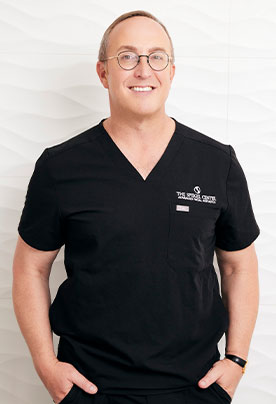Jul 28, 2023

Over the last 15 years lip lifts have been rediscovered. Dr. Spiegel is the reason! He started teaching other doctors, presenting research papers, and publishing “how-to” articles explaining why lip lifts are important and how to do them correctly. Since that time, the importance of lip lifting has reemerged as a powerful procedure to create youthful, feminine, and attractive lips. Often, lip lifting is all you need to change the entire perception of your face from old and angry to young and happy. There are many nuances to lip lifting, and these are not all widely known. Here’s a quick introduction to the varieties of lip lifts and how they are done.
The most common lip lift is the “subnasal” or “bullhorn” lip lift. It is given these names because the incision is underneath the nose (or subnasal) where the skin color part of the lip meets the groove at the bottom of the nose. It also looks like the horns of a bull as it wraps around the nostrils. Many doctors describe doing a “modified bullhorn” lip lift, which just means that the stitches are put more inside the nose. This is a good idea when you don’t have a deep groove under the nose in which to hide the stitches. If you do have a deep groove that is actually a better place for the stitches than inside the nose. Some surgeons call this type of lip lift a “Deep plane” lip lift. This is not actually anatomically correct, as there is no “Deep plane” to the lip. The levels of the lip are the skin, some underlying fat tissue, and then the orbicularis oris muscle which is the muscle that helps you purse your lips together. Everything above this muscle is superficial, so not technically deep. Removing muscle is rarely needed and usually not a good idea. “Deep plane” lip lift is largely used for marketing purposes to coincide with the popular and well-known deep plane facelift, which is a correct description of an entirely different operation from a traditional facelift.
The next most important type of lip lift is the “corner lift”. If the corners of your lips turn down it can make you look unhappy, or give you what is commonly, and unkindly, known as “RBF”. Fortunately, it is not difficult to adjust this. We can do a corner lift (sometimes called a banner lip lift or sweetheart lip lift or pennant lift) to redirect the corners of the mouth into a slight smile instead of a frown.
For some people, there can be significant asymmetry of the lip where one side is lower than the other. In these situations, we may do a “vermilion border” lip lift where the incisions are hidden, and the stitches are placed, where the red of the lip (mucosal lip) meets the skin color (cutaneous) part of the lip. This can correct asymmetries and lift the lip when an incision under the nose is not advisable.
We do lip lifts combined with other surgeries in the operating rooms at Newton Surgery, but, many people do this as a single procedure in the office using local anesthesia. First, the doctor will mark the lip lift and show you where the stitches are going to be placed. Then, some numbing medicine is injected into the area. This is very well tolerated and the only part of the procedure you’ll feel. Next, the lip lift is done and a series of stitches are placed. These include deep or buried stitches under the skin to lift the lip and some (typically) removable stitches that will be in place for one week. In some cases, the doctor will suggest dissolving stitches. After the stitches come out you’ll have a thin, red, raised line that will steadily fade away. The small scar from the lip lift is very well hidden and a great trade to get rid of the long, aging upper lip or downturned corners of the mouth.
Lip lifting is a powerful, fast, and well-loved procedure. Wondering if a lip lift is right for you? Let’s talk! Email [email protected] or call (617) 566-3223 today.





